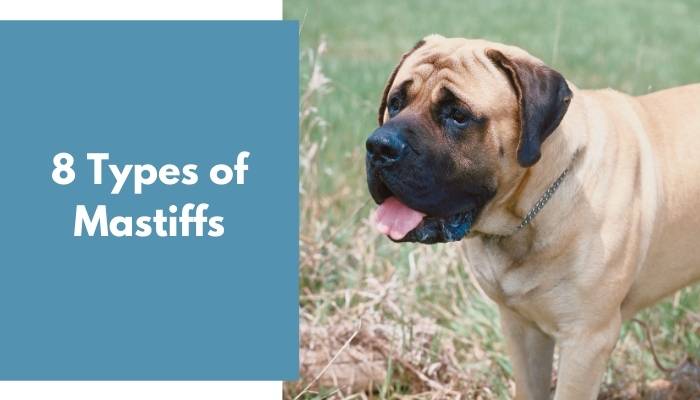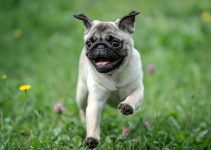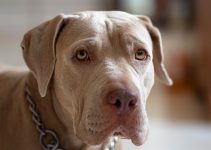If there’s one thing that every dog enthusiast knows, it’s that the Mastiff breeds boast of their massive sizes. These breeds are famous for their muscular build and large bodies. Thus, if you’re a fan of big dogs, you need to know more about these breeds.
When we speak of mastiffs, we refer to nothing but large and powerful types of dogs. They often have short and fine coats. Their heads and bodies are muscular and compact, and they have broad and short muzzles.
Mastiffs come in many kinds. Thus, you’ll have many options to choose from when it comes to these breeds. In reality, there are dozens of dog breeds we can consider as such. However, in this article, we’ll tackle eight of the famous mastiffs.
Without further ado, let’s get into it!
Contents
- 1 Types and varieties of mastiffs
- 2 Bullmastiff
- 3 English Mastiff
- 4 American Mastiff
- 5 Tibetan Mastiff
- 6 Neapolitan Mastiff
- 7 Anatolian Mastiff
- 8 Cane Corso
- 9 Dogo Argentino
- 10 How do I identify my mastiffs?
- 11 Is a mastiff a purebred?
- 12 What is the best color for mastiffs?
- 13 What is the best type of mastiff?
- 14 Summary
Types and varieties of mastiffs
As I said earlier, mastiffs come in many varieties and kinds. However, we’ll learn more about eight famous mastiffs you’ll undoubtedly love. We’ve also included a particular trait for each one.
Read also about types of other breeds:
Hopefully, this will help you learn a thing or two about each kind. Or, more likely than not, help you decide which one to get.
Take some time to read below.
Bullmastiff
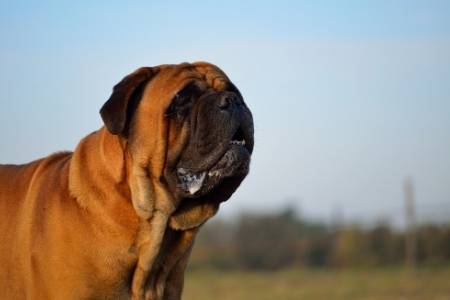
The Bullmastiff isn’t exactly the largest of the bunch. However, it doesn’t make this breed any less intimidating. This breed came from crossbreeding an Old English Bulldog and an English Mastiff. Thus, it has a shorter stature and snout than the other Mastiffs.
Like the others, this type belongs to the part of the working group. Still, it’s surprising to know that they have a specific job, that is, hunting down poachers.
For this reason, you can say that these Mastiffs are expert watchdogs. This trait makes them excellent protectors for the family.
If you plan on getting such, you’ll need constant training and socialization so this dog would do well at home.
- Height: 24-27 inches
- Weight: 100-130 pounds
- Lifespan: 7-9 years
In general, we can sum up the Bullmastiff with the following:
- Shorter stature than the others
- Makes excellent watchdogs
- Needs constant training and socialization
English Mastiff
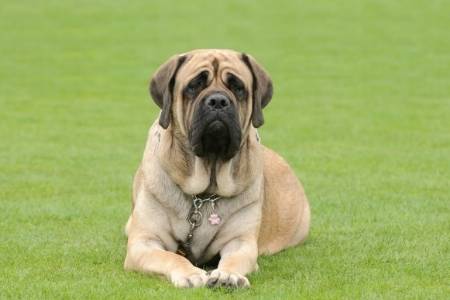
The English Mastiff is a bit taller and more extensive than the Bullmastiff. Like the rest of this bunch, these dogs are always intimidating. Still, they remain to be loyal and protective of those they think of, like their family.
The English Mastiff is famous for being good guard dogs. They can protect both properties and livestock and even their owners. Since they are perfect guards, there’s nothing that can scare them easily.
The thing about this breed is that it’s not ideal for beginner dog-owners. The reason is that English Mastiffs require frequent training and socialization. It’s not something suited for dog lovers who have no experience with training a dog yet.
Moreover, the English Mastiff can be a bit emotional and sensitive, contrary to its immense size. Thus, harsh training can be a reason for this dog to lose trust in its owner.
- Height: 27½ inches and up
- Weight: 120-170 pounds (female) or 160-230 pounds (male)
- Lifespan: 6-10 years
In general, English Mastiffs set themselves apart from the rest with the following:
- Not suitable for inexperienced dog owners
- Need constant socialization and training starting at an early age
- Emotional and sensitive, not suited for harsh training
American Mastiff
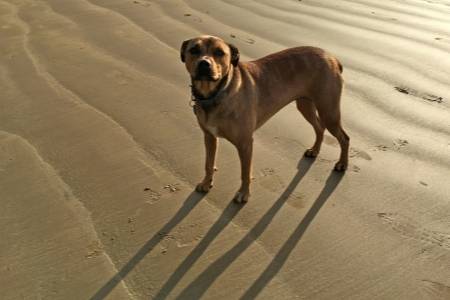
The American Mastiff came from crossing the English and Anatolian Mastiffs. The American Mastiff shares a similar appearance and disposition to its English counterpart. However, the former falls a little bit shorter in size.
Some breeders don’t think that the American Mastiff stands independent as a breed. On the other hand, the fans of this breed say otherwise. They believe that these dogs have drier mouths. Moreover, they are a bit more friendly in comparison to other Mastiffs.
For this reason, the American Mastiff is suitable for dog owners who know how to train dogs. Moreover, they don’t require that much training as the rest, though they still need it.
- Height: 26-36 inches
- Weight: 140-180 pounds (female) or 160-200 pounds (male)
- Lifespan: 10-12 years
In general, we can sum up the American Mastiff with the following traits and information:
- Same appearance and disposition to the English Mastiff
- A bit friendlier than the rest of the group
- Requires constant training and socialization as well, but a friendlier one than the rest.
Tibetan Mastiff
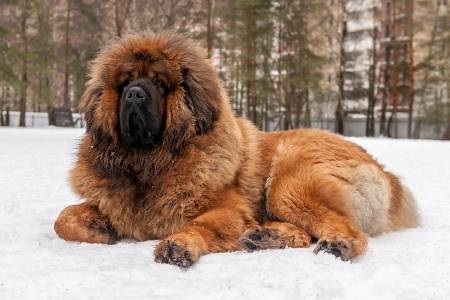
The Tibetan Mastiff sets itself apart from the rest by its coat. Most Mastiffs have short coats. However, the Tibetan has a long and fluffy coat. It often comes in either gold, brown, or black fur.
For this reason, it’s easy to identify a Tibetan from the rest of the Mastiff Breeds.
Moreover, Tibetan is the most protective dog of the bunch. Thus, having a stranger around this dog isn’t a good idea. It can either be fiercely territorial or show some aloofness.
Still, the breed’s size and confidence offer a calm and friendly aura to those it thinks of as its family.
- Height: 24 inches and up
- Weight: 70-120 pounds (female) and 90-150 pounds (male)
- Lifespan: 10-12 years
In general, we can sum up the Tibetan Mastiff’s characteristics with the following:
- Has a long and fluffy coat
- The most protective of all Mastiffs
- Friendly to those it knows
Neapolitan Mastiff
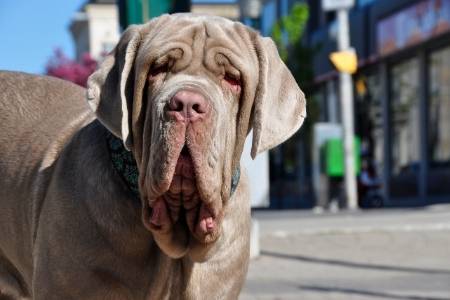
If you’re into that wrinkles on Mastiffs, the Neapolitan will suit your preference. This breed is a modern Italian one, and it’s close to the ancient Molossus dog.
Of course, like all Mastiffs, the Neapolitans are friends with those they know. However, they can be fierce to strangers. When it’s with friends and family, they are affectionate, calm, and friendly.
Still, when it comes to those that are unfamiliar, their protective instincts come out of them.
More likely than not, they are one of the most energetic and playful Mastiffs. Of course, that only applies when it receives proper training and socialization.
- Height: 24-31 inches
- Weight: 110-150 pounds
- Lifespan: 7-9 years
In general, we can sum up the Neapolitan with the following distinctions and characteristics:
- Has that trademark wrinkles on the face
- One of the most energetic and playful mastiffs
- Friendly to family and fierce to strangers
Anatolian Mastiff
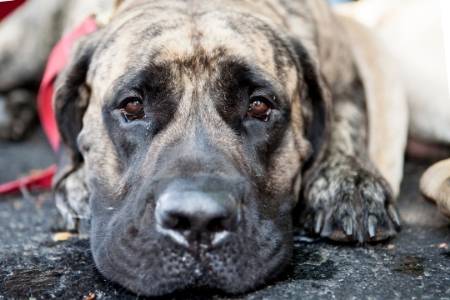
The Anatolian Mastiff has many names. However, its history tells nothing short of being a great working and guard dog. These dogs started in Turkey in the 1200s. Since then, they have been around ever since to protect the herd and livestock.
The Anatolians gained fame in the United States and even with other countries through their loyal and fierce personalities.
Of course, they have that Mastiff attitude that is friendly to family and fierce to strangers. Thus, they fall nothing short when it comes to protection.
The Anatolians in the past have protected sheep. Thus, they can guard and herd anything, from large cattle and even birds, with proper training.
- Height: 28-32 inches
- Weight: 90-120 (female) or 110-145 (male)
- Lifespan: 12-15 years
In general, the Anatolian Mastiff has the following characteristics that set it apart from the rest:
- Both working and guard dog
- Needs proper training to herd animals
- Protective to families against strangers
Cane Corso
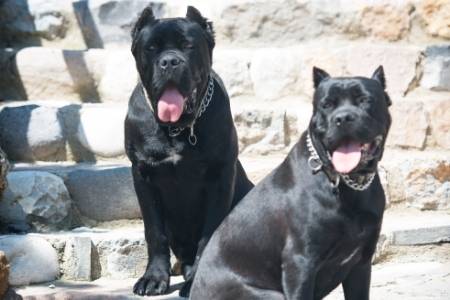
The Cane Corso, like the Neapolitan, is a close relative of the Molossus dog. In fact, it’s even more intimate than its cousin.
The Cane Corso shares the same appearance and lineage with the Neapolitan. However, this breed is a bit smaller and also a bit more stubborn.
A poorly trained Cane Corso will act according to its own. Thus, it needs constant training and socialization starting from its youth. Among all Mastiffs, this breed is one of the most challenging to train.
Nevertheless, the Cane Corso remains to be intelligent and receptive to training. You’ll only need persistence to teach this dog.
- Height: 23½-27½ inches
- Weight: 88 to 120 pounds
- Lifespan: 9-12 years
In general, we can sum up the Cane Corso with the following characteristics:
- Smaller and more stubborn than the Neapolitan
- Needs constant and persistent training than the others
- Intelligent and does well if appropriately trained.
Dogo Argentino
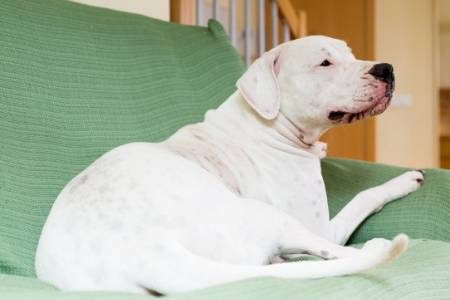
Originating from Argentina, the Dogo Argentino is a famous mastiff for taking down a large hunting game. The AKC Standard for this breed is that it needs to be entirely white. The only exception is a small dark patch near its eye.
The thing about this dog is that it has an aggressive character. Thus, this breed gets banned in several countries. Moreover, it’s popular in the dogfighting world.
Of course, it doesn’t mean that the Dogo Argentino can’t be a great pet. Still, it’s not a hidden fact that it needs structure and consistent training. Without such, handling this aggressive dog can be quite problematic.
- Height: 23½-27 inches
- Weight: 80-100 pounds
- Lifespan: 9-15 years
In general, we can look at Dogo Argentino with the following characteristics:
- Has an aggressive character
- Banned in some countries
- Needs a structured and consistent training
How do I identify my mastiffs?
Each mastiff has its unique traits and characteristics. In fact, if you observe details, you can distinguish each type apart from the others.
Mastiffs all share that same personality. They are friendly and protective of those they think of, like their family. However, they can be fierce to those they don’t know.
When it comes to personality, the only difference usually lies in the level of aggressiveness and attitude.
In general, mastiffs are great protectors and friends. However, they need constant training, as well.
For this reason, getting a mastiff would require you to understand the risk. Moreover, you’ll likely need to have experience in training dogs.
Is a mastiff a purebred?
Mastiffs are one of the most ancient kinds of dog breeds, and yes, they are purebreds. Purebred is the term for dogs that have pure blood and characteristics recognized by the kennel club.
Although some mastiffs came from crossbreeding, they receive recognition from kennel clubs. Of course, there are some standards to consider a dog a purebred.
Regardless, mastiffs remain purebred. Despite being such, you can still find such in dog shelters and rescue areas.
If you can find one in these places, it would be best to adopt rather than purchase one.
What is the best color for mastiffs?
Of course, it will depend on individual preference when it comes to the best color for mastiffs. However, the best color for many is fawn. Fawn is the blond color and is the most popular for many owners.
It includes some dark hairs disbursed throughout. It may have some white patches, though it will likely come unnoticeable in the coat.
Other mastiffs come in brindle coat and different colors. However, the fawn is likely usual and the most popular.
What is the best type of mastiff?
The best type of mastiff lies in the owner that will take the dog home. For instance, some mastiffs need more training and socialization, so it’s for those willing to give more time and effort.
All kinds of mastiffs share the same attitude you’ll always love about them. They are friendly and protective as long as you’re its family. However, they can be fierce to strangers they don’t know.
Of course, each kind may differ on the level of fierceness and friendliness. Thus, it would be best to understand your experience in handling such dogs.
If you’re not familiar with training such large and aggressive dogs, it would be best to see other options aside from mastiffs.
However, if you’re into training dogs, then the mastiffs can be great companions.
All mastiffs are great companions, no matter what the type. For this reason, choosing any of these dogs won’t be that much when it comes to personality. Just make sure you know how to train them.
Summary
Mastiffs are big and powerful dogs. These two things are what they boast among the rest of the dogs. Thus, they are famous protectors, guards, and herd dogs.
All mastiffs are friendly to their family. However, they can be aggressive towards strangers.
Mastiffs come in many varieties, but they share the same attitude and personality. The only difference lies in the level of aggressiveness. Some may be more fierce than others while some need more training.
As long as you understand that all of these dogs need structure and training, you can’t go wrong with any kind.
